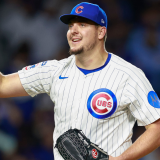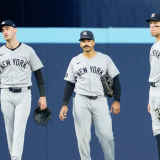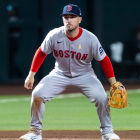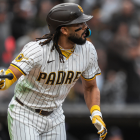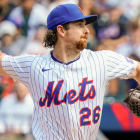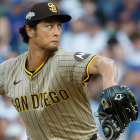It's not just Cal Raleigh: Mariners' underrated offense is thriving in one of baseball's toughest ballparks
Seattle is back in the ALCS and its offense is for real

The Seattle Mariners are headed to the American League Championship Series for the first time since 2001. Drink it in, Pacific Northwesterners, like a cup of Seattle coffee.
As the Mariners approach the biggest Seattle baseball series in more than two decades, many people unfamiliar with the team will be looking to familiarize themselves with this bunch. The tendency might be to view this as a Mariners team that stresses run prevention and doesn't hit all too well, other than slugging catcher Cal Raleigh and his 60 home runs -- those can't have slipped past the consciousness of anyone, right?
Especially after the Mariners played a 15-inning marathon against the Tigers in Game 5 of the ALDS, where the final score was 3-2, the sentiment might again be that the Mariners' offense is a little light.
These Mariners can hit, though, and it isn't just Raleigh. Their numbers get suppressed by their home ballpark and the context behind those numbers must be accounted for.
T-Mobile Park in Seattle has long been one of the worst in baseball. Using Statcast's park factor, in the last three years, T-Mobile Park has ranked dead last in a blowout. Excepting the situations with the Rays and A's, 26 of the 28 ballparks are between 104 and 97, with 100 being a totally neutral ballpark, over 100 favoring hitters and under 100 favoring pitchers. Coors Field clocks in at 114. T-Mobile is 91. This is to say that it's 6% worse on hitters than any of the other pitcher-friendly parks like Petco Park and Oracle Park.
Still, playing 81 games in this pitcher's paradise, the Mariners have managed to be a good offensive team this season. It must also be stated that when the Mariners play at home and suffer the wrath of T-Mobile, the opponent faces the same issues. Generally speaking, the home team is more comfortable. It's actually an advantage, despite crushing the stats of the Mariners' hitters. After all, the Mariners went 51-30 at home this season.
Still, let's focus on illustrating how good the Mariners' offense is and how much the ballpark affects their stats.
The league average triple-slash line this season was .245/.315/.404. The Mariners hit 244/.320/.420. As you can see, that's already slightly above average. They were ninth of 30 teams in runs scored, which is better than middling; it's in the top third of the league and pretty good.
The batting line in T-Mobile Park (the Mariners and their opponents combined) this season was .223/.294/.376. This must mean the Mariners crush the ball on the road, right? Yes. On the road this season, the Mariners hit .259/.332/.444. The league average among the 30 teams this season on the road was .242/.311/.398, so the Mariners hit 17 points better than average and have 46 points higher in slugging percentage from the average team once they're freed from the shackles of T-Mobile.
The two big "plus" stats that adjust for ballpark settings would be OPS+ and wRC+ (weighted runs created plus). Much like with park factor, 100 is average, and anything below or above is the percentage difference from average. For example, a 92 OPS+ is 8% below average and a 112 is 12% above average.
Given the oppressive ballpark in which they play 81 games, the plus stats really like the Mariners and how they're able to hit despite their built-in handicap here.
As a team, the Mariners ranked fifth in OPS+ and third in wRC+ behind just the Yankees and Dodgers. As far as individually, peer at these regular-season numbers:
- Raleigh posted a 169 OPS+ (third in MLB) and 161 wRC+ (fourth).
- It was spurred on by a monster start to the season, but DH/2B Jorge Polanco finished at 134 OPS+ and 132 wRC+.
- Center fielder Julio Rodríguez was at 128 and 126, respectively, and remember, he also stole 30 bases.
- Speaking of steals, left fielder Randy Arozarena stole 31 in addition to his 119 OPS+ and 120 wRC+.
- Shortstop J.P. Crawford is a glove-first guy, but he had a 111 OPS+ and 113 wRC+.
- Right fielder Dominic Canzone didn't qualify for any league leaderboards due to playing in only 82 games, but he hit .300/.358/.481 with a 142 OPS+ and 141 wRC+.
- Third baseman Eugenio Suárez and first baseman Josh Naylor were acquired at the trade deadline and both are capable of hitting like All-Stars. Naylor has. In his 54 games for the Mariners, he had a 138 OPS+ and 137 wRC+.
Even if you wanted to exclude Suárez here due to hitting poorly overall in his time with the Marines -- despite him finishing with 49 home runs on the season -- we just went through a group with one of the best hitters in all of baseball, five more around 20% or more better than average and another 11-13% better than average.
Or we could just skip all the numbers and say this:
The Seattle Mariners have a deep lineup with a star-laden middle-of-the-order who can beat you with singles, stolen bases and/or home runs. It would be folly to look at their stats and assume they are merely slightly above-average. They are much better than that. They are a very formidable bunch.





